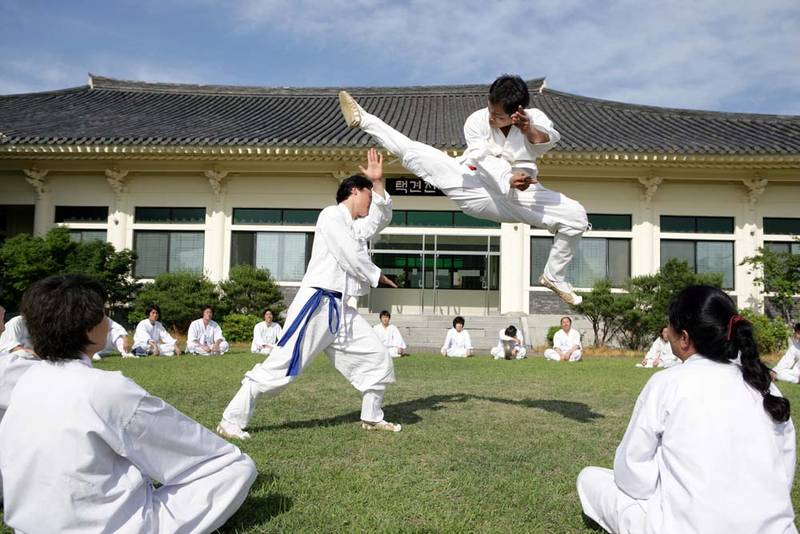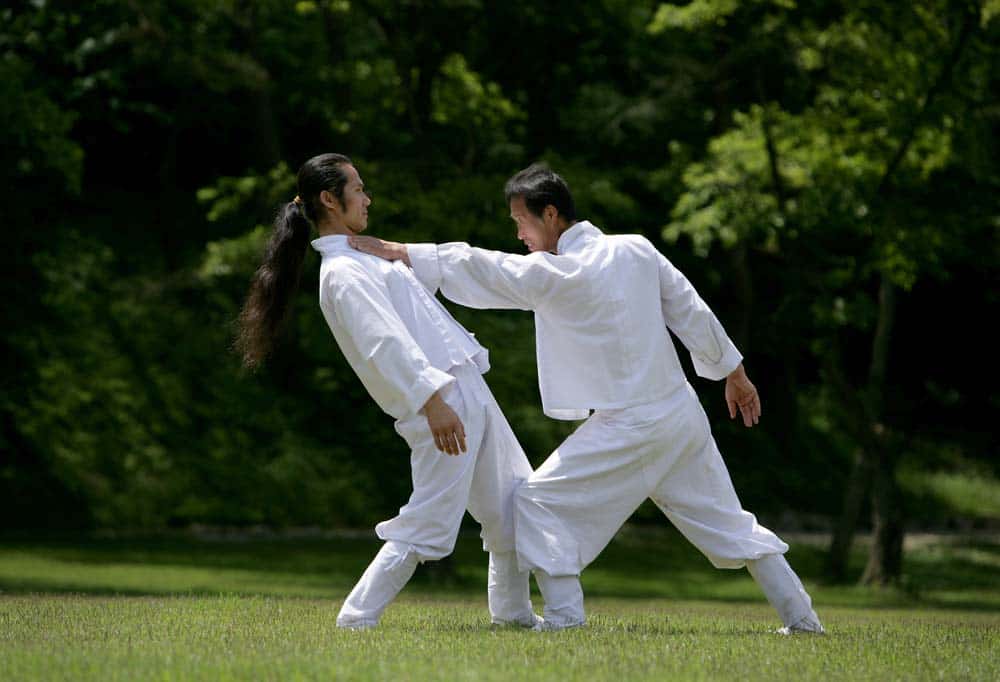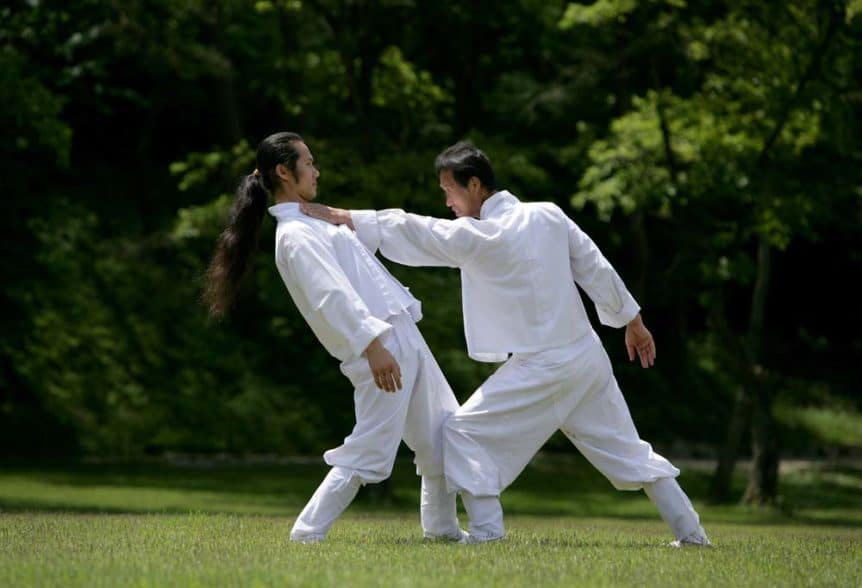
When you first step into the vibrant world of Korean martial arts, the variety of disciplines can feel overwhelming. From the dynamic kicks of Taekwondo to the fluid movements of Hapkido and the lesser-known Taekkyeon, each art offers a unique approach to self-defense, fitness, and cultural heritage. For those curious about Taekkyeon and Taekwondo, two of Korea’s most iconic martial arts, this guide dives deep into their histories, techniques, and global impact. By the end, you’ll have a clear understanding of what sets these arts apart and how they’re intertwined, helping you decide which might suit your interests.
What is Taekkyeon?
Taekkyeon, sometimes spelled Taekkyon or Taekyun, is one of Korea’s oldest martial arts, with roots tracing back centuries. Often described as a dance-like discipline, Taekkyeon emphasizes fluid, rhythmic movements and a distinctive footwork pattern known as pumbalgi or “stepping-on-triangles.” This triangular stepping allows practitioners to move gracefully, maintaining balance while setting up attacks or defenses. Unlike many martial arts that focus on rigid strikes, Taekkyeon’s techniques are characterized by curved, flowing motions, often using open hands rather than clenched fists.
Taekkyeon incorporates a blend of kicks, hand strikes, throws, takedowns, and grappling techniques. Its low, sweeping kicks and leg trips aim to unbalance opponents, often knocking them to the ground. While it includes powerful strikes, Taekkyeon prioritizes finesse over brute force, with movements that appear gentle but can deliver devastating blows. This balance of strength and flexibility has made Taekkyeon a popular choice for fitness and gymnastics, particularly among women seeking a less intense martial art.
Recognized as South Korea’s first martial art to be designated a National Treasure in 1983 and a UNESCO Intangible Cultural Heritage in 2011, Taekkyeon holds a special place in Korean culture. Its historical significance as a folk art, practiced widely during the Joseon dynasty, underscores its role as a symbol of Korean identity.
What is Taekwondo?
Taekwondo, meaning “the way of the foot and fist,” is a modern Korean martial art that has become a global phenomenon. The name breaks down into tae (foot or to strike with the foot), kwon (fist or to strike with the hand), and do (way or discipline). Developed in the 1940s and 1950s, Taekwondo emerged from a synthesis of indigenous Korean fighting styles, such as Taekkyeon and Subak, and foreign influences, including Japanese karate and Chinese martial arts. Its founders, including General Choi Hong Hi, aimed to create a unified martial art that embodied Korean spirit and technical precision.
Taekwondo is renowned for its high, spinning, and jumping kicks, which prioritize speed, power, and accuracy. Practitioners train in three main areas: poomsae (forms or patterns), kyorugi (sparring), and gyeokpa (breaking techniques). The art emphasizes disciplined movements, often executed from a stable, linear stance, and focuses on striking rather than grappling. Beyond physical techniques, Taekwondo promotes mental discipline, self-control, and a philosophy of peace, aiming to resolve conflicts non-violently when possible.
Today, Taekwondo is practiced in over 200 countries, with millions of practitioners worldwide. It’s an Olympic sport, debuting as a demonstration event in 1988 and becoming a full medal sport in 2000. Governed by organizations like World Taekwondo (WT) and the International Taekwon-Do Federation (ITF), Taekwondo has a standardized curriculum and competitive framework, making it accessible to beginners and elite athletes alike.
Historical Context: The Evolution of Taekkyeon and Taekwondo

To understand the differences between Taekkyeon and Taekwondo, it’s essential to explore their historical roots. Taekkyeon’s origins are ancient, with evidence of similar unarmed combat styles during Korea’s Three Kingdoms period (57 BCE–668 CE). By the Joseon dynasty (1392–1910), Taekkyeon was a popular folk art, practiced by commoners and disguised as a game to avoid scrutiny from authorities. Its survival was threatened during Japan’s occupation of Korea (1910–1945), when Korean martial arts were suppressed, but masters like Song Duk-Ki preserved its techniques, leading to its revival post-liberation.
Taekwondo, by contrast, is a product of the 20th century. After Japan’s occupation ended in 1945, Korean martial artists sought to unify various kwans (martial arts schools) into a single discipline. The Korea Taekwondo Association (KTA), formed in 1959, standardized techniques, and in 1972, the Kukkiwon became the national academy for Taekwondo.
The World Taekwondo Federation (now World Taekwondo, WT) was established in 1973 to promote the sport globally, securing its Olympic status in 1980. While Taekwondo’s name and some techniques draw inspiration from Taekkyeon, its development was heavily influenced by karate, leading to debates about its “Korean-ness.”
A common misconception is that Taekkyeon is an “ancient version of Taekwondo.” While Taekwondo’s founders referenced Taekkyeon to assert a Korean lineage, Taekkyeon associations, such as those practicing Widae Taekkyeon, explicitly deny a direct connection. Some kwans, notably Moo Duk Kwan, incorporated elements of Taekkyeon’s kicking techniques, but Taekwondo’s structure and philosophy align more closely with modern martial arts systems.
Technique and Philosophy: How They Differ
The most striking differences between Taekkyeon and Taekwondo lie in their techniques and underlying philosophies. Taekkyeon’s movements are fluid and circular, resembling a dance or rhythmic flow. Its pumbalgi footwork enables practitioners to shift positions seamlessly, using low kicks, sweeps, and open-hand strikes to disrupt an opponent’s balance. Throws and grappling complement its striking focus, making it versatile for both standing and close-range combat. Philosophically, Taekkyeon emphasizes spontaneity and adaptability, reflecting its folk roots and cultural role as a communal activity.
Taekwondo, on the other hand, prioritizes linear, precise movements. Its kicks are high and explosive, designed for maximum impact, often targeting the head or torso. Practitioners maintain a stable stance, delivering strikes with speed and power. Taekwondo’s competitive sparring (kyorugi) uses a point-based system, rewarding clean, controlled techniques, while its forms (poomsae) emphasize discipline and mastery of posture. The philosophy of Taekwondo centers on self-discipline, respect, and the pursuit of peace, aligning with its modern role as a sport and educational tool.
The following table summarizes the key differences:
| Aspect | Taekkyeon | Taekwondo |
|---|---|---|
| Origin | Ancient, with roots in the Three Kingdoms period; revived in the 20th century | Developed in the 1940s–1950s, formalized in 1955 |
| Techniques | Fluid, circular movements; low kicks, sweeps, throws, grappling | Linear, high kicks; punches, blocks; no grappling in standard practice |
| Footwork | Pumbalgi (triangular stepping), dance-like | Stable, linear stances for power and precision |
| Philosophy | Spontaneity, adaptability, cultural heritage | Discipline, self-control, peace through controlled force |
| Global Reach | Limited, primarily in South Korea; growing interest globally | Practiced in over 200 countries; Olympic sport since 2000 |
| Cultural Status | UNESCO Intangible Cultural Heritage (2011) | South Korea’s national sport; global competitive framework |
Popularity and International Recognition
Taekwondo’s global popularity far surpasses Taekkyeon’s, largely due to its Olympic status and standardized systems. World Taekwondo (WT), recognized by the International Olympic Committee (IOC) in 1980, oversees competitions in 213 member nations as of 2023. The sport’s inclusion in the 2000 Sydney Olympics elevated its profile, attracting millions of practitioners, including over 5 million in the United States alone. Organizations like the United States Ta peintre (USA Taekwondo), a member of the U.S. Olympic Committee, promote Taekwondo’s competitive and cultural aspects.
Taekkyeon, while deeply respected in South Korea, remains less known internationally. Its recognition as a UNESCO Intangible Cultural Heritage has sparked interest, but its practice is concentrated in Korea, with limited dojos elsewhere. Taekkyeon’s non-competitive nature and focus on cultural preservation make it less suited for global sports frameworks like the Olympics, though its appeal in fitness and cultural tourism is growing.
Which Martial Art is Right for You?
Choosing between Taekkyeon and Taekwondo depends on your goals and preferences. If you’re drawn to a traditional, culturally rich martial art with fluid movements and a focus on balance and flexibility, Taekkyeon offers a unique experience. It’s ideal for those interested in Korean heritage or seeking a less intense, dance-like practice. However, finding a Taekkyeon school outside Korea can be challenging.
Taekwondo, with its global accessibility and competitive opportunities, suits those who enjoy high-energy training, precise techniques, and the chance to compete at amateur or Olympic levels. Its structured curriculum and emphasis on discipline make it popular for all ages, from children learning self-control to adults pursuing fitness and self-defense.
The Cultural Significance of Both Arts
Both Taekkyeon and Taekwondo reflect Korea’s dynamic history and cultural resilience. Taekkyeon, as a folk art, embodies the spirit of community and adaptability, surviving centuries of political upheaval. Taekwondo, born from Korea’s post-war push for national identity, represents modernization and global outreach. Together, they showcase the diversity of Korean martial arts, each offering a window into the nation’s past and present.
Whether you’re a martial arts enthusiast, a fitness seeker, or a cultural explorer, Taekkyeon and Taekwondo provide distinct paths to personal growth. By understanding their differences and shared heritage, you can appreciate the richness of Korean martial arts and find the discipline that resonates with you.

